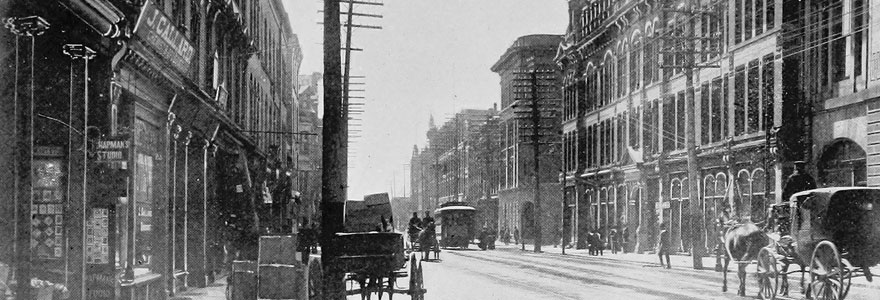News and Updates
Contact
Faculty of Social Science
Social Science Centre
Room 9438
Western University
T. 519-661-2053
F. 519-661-3868
E. social-science@uwo.ca
Oral history project aims to tell stories from London’s Black community
February 08, 2022
The City of London, Ont. in the 1900s. (Photo source: Internet Archive Book Images/Wikimedia)
Story by Rob Rombouts
A project aiming to tell the stories that paint the history of the SoHo neighbourhood is seeking to fill in some gaps in the history of the Black community in London, Ont.
Very little is known or recorded about what happened in the Black community in London from the 1870s to the 1980s, said Michelle Hamilton, professor in the public history program. “We are hoping to get at that history.
Launched in October 2021 as a partnership between Vision SoHo Alliance and Western’s public history program, the project involves the collection of oral histories from the SoHo neighbourhood – a local moniker for the area south of Horton – as well as from people who worked or were patients at the hospital and medical school that were located in the neighbourhood.
In general, the response has been very positive, said Hamilton. She said much of the history of the Black community in London has focused on the stories of formerly enslaved people.
“Being Black in London doesn’t just mean being descended from Black slaves,” said Hamilton. “It could mean coming from the Caribbean or Africa, or other areas. We want to know those stories that happened at different times.”
A similar, earlier project, Hear Here, included many stories of formerly enslaved people who moved to London, pulled from Benjamin Drew’s 1856 book, The Refugee: Narratives of Fugitive Slaves in Canada, and read by voice actors.
The narratives collected from the book are stories of success, as well as hardships and racism faced by the Black community in London.
Along with the oral history project, another initiative, The Black Press in 19th-century Canada and Beyond, is working on digitizing the archives of The Dawn of Tomorrow, a newspaper for the Black community, which began in 1923 and ran until the 1970s.
“We anticipate when that is digitized, we will know a lot more about the community,” said Hamilton.
Hamilton has also contacted the Black Canadian Veterans Project, which is sharing information about Black soldiers from SoHo.
The first Black community in London, centered around the African Methodist Episcopal Church, was originally located in the SoHo vicinity, before it moved to the Hamilton Road area. Surrounded by the river on two sides, and railroads on the other two, SoHo was a manufacturing and transport hub, and provided employment opportunities for many immigrants and racialized communities. The hospitals also provided employment.
“There’s been an amazing diversity in the neighbourhood through its history,” said Hamilton. “It made sense that if you wanted to work and didn’t have skills useful for other industries or employers in London, it was the place to live.”
The SoHo oral history project is looking for stories that can speak to what it was like to live and work in the neighourhood.
“A lot of people, when asked to do oral history, say they don’t know anything. People may overestimate what an oral history project is looking for,” said Hamilton. “We are seeking voices who can speak to Black history in London. We want to capture stories to create a sense of neighbourhood; we want to know about what life is like for an average person.”
People who want to contribute stories for the project can contact Michelle Hamilton at mhamilt3@uwo.ca, 519-661-2111 ext. 84973, or @westernupubhist.
Related stories:
- Western faculty take part in restoring piece of Black history
- Giving SoHo’s history new life

